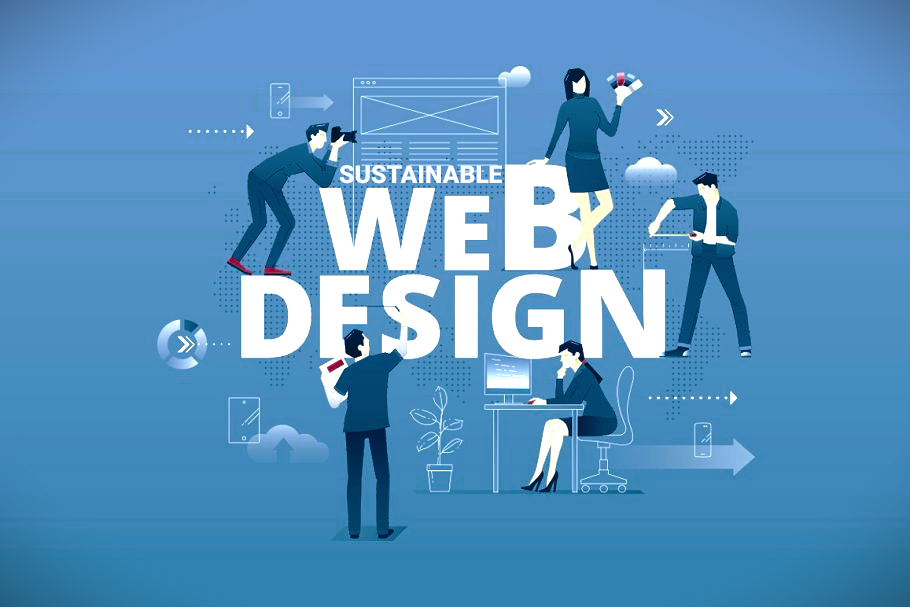


Many of you might have been wondering what a sustainable web design is. Do you know how to find out what the environmental impacts of your site are? Do you know what makes your site more sustainable and how these improvements comfort your customers? While creating an online presence, both web design and development play crucial roles. Let's dive into the design part of it now.
According to the website carbon, the Internet consumes 1229.4 terawatt-hours (TWh) per year in our country. This causes the million tons of CO2 to fall under the responsibility of people who make the web. Actually, the digital presence doesn't always mean green, everything needs the energy to function properly, from server farms to data centers to user devices. The number of websites we develop every day cannot mark in finger counts, it's large beyond. It is found that an average website is estimated to produce 1.76 grams of CO2 when a single user visits the website. If there are 10,000 visitors per month, it is estimated to generate two hundred pulse kilograms of Carbon dioxide every year for a single site. Can you imagine a world without the internet? We are not ready to compromise with no internet community. But have you imagined the disaster the internet is causing to our nature? This would gradually create an unfit environment for life on earth. In order to reduce the impact, we can develop sustainable website designs as a suitable sustainable alternative to traditional web design. None of us intentionally insist on building a 1.4MB page, but the requirements of clients who are not much aware of the consequences often demand eye-catching images, videos, animations, and advanced social features, which would make it pretty large in size. One of the best ways to prevent this is to set a budget for page size.
Usage of a number of images and videos takes more bandwidth to download, to avoid this we can utilize sustainable website designs, CSS for styling and animation instead of more bandwidth-intensive alternatives such as Flash or Java applets. Sustainable web design mainly focuses on the user experience, so there is less load time, less traffic which would save more money for both users and owners and reduce the impact on environmental health. The wrangle of sustainable web design is that the current style of creating websites is not sustainable enough to create no negative effects on the environment, as well as implications for social justice. The core of the sustainable design is to kingpin the circular economy with zero waste. Goals sustainable web designers work towards is to create a sustainable global community by making differences immediately while they are waiting for larger changes. The other goal is to reduce the cost of electricity bills for users and owners using sustainable websites by decreasing the amount of data utilization. Sustainable web designs result in websites that causes less website traffic, and very less bandwidth
A website is called a sustainable website only if it is considered from every angle including color scheme, faster page load speed, reduced file sizes, and less complexity of the content on the webpage which results in sustainable web design that has an improved user experience making more beneficial to the owner because they dont use as much bandwidth/energy, making them cheaper for owners to host.
The resources consumed for running a website or an online shop are a lot. One thing that is indubitable about web hosting is that it devours energy and causes considerable CO2 emissions on every single use. Lately, many hosting providers have come to understand the fact that the internet's environmental impact is not something to be neglected and now rely on renewable energies. Sustainability and climate protection aren't empty buzzwords always, they form an important part of our corporate culture. The proper design can prevent unnecessary energy consumption up to a large extent. You can optimize a "mobile-first" approach for the content for smartphones right from the very beginning. This would not load oversized media on mobile devices and is programmed in such a way so that the desktop versions don't need to be overwritten and optimized for smaller user devices. Improve the user experiences using well-planned usability and help users to have a more sustainable website. Minimized unwanted detours help to achieve this. Reducing unwanted clicks will result in fewer data requests and therefore use less energy. Reduce the page count for increased sustainability, this is another area while planning your website. The fewer pages, the fewer data requests are sent results in easier website navigation, it also makes sense by reducing the data utilization and better user experiences.
